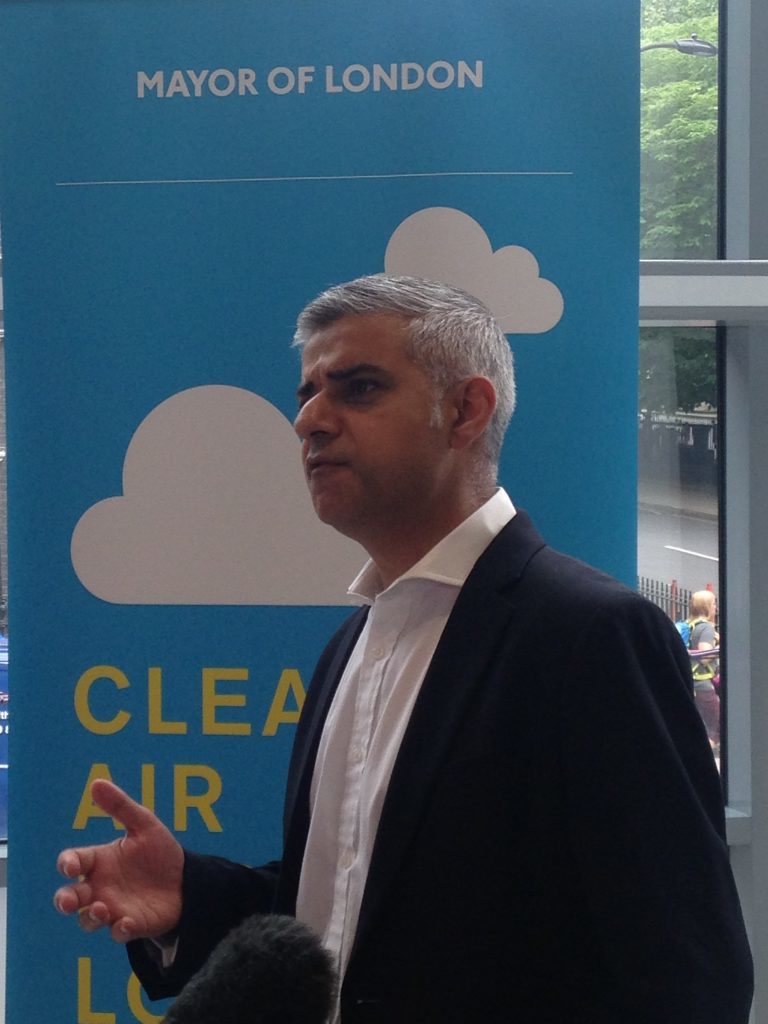Mayor sets 2020 timetable for London ‘Zero Emission Zones’
The Mayor of London has brought forward his aim to establish a series of ‘Zero Emission Zones’ in parts of the capital by five years, in the final draft of the London Environment Strategy published last week.
These would see non-zero emission subject to road user charges (similar to the Low Emission Zone) or other vehicle prohibitions or restrictions from 2020 in town centre areas across the capital.

Mayor of London, Sadiq Khan
The Mayor has brought forward the date for the rollout of the Zones by five years from 2025, as initially set out in the draft version of the strategy last summer (see airqualitynews.com story).
According to the latest version of the strategy, which was presented to the London Assembly last week, working through TfL and alongside London boroughs, City Hall will seek to implement zero emission zones in town centres from 2020 and aim to deliver a zero emission zone in central London from 2025.
These will be implemented alongside “broader congestion reduction measures to facilitate the implementation of larger zero emission zones in inner London by 2040 and London-wide by 2050.”
“This proposal, including the vehicles and area it applies to, charge levels and hours of operation, and discounts and exemptions or other restrictions, will be developed in the next few years. Schemes will be subject to statutory consultation before being introduced,” the strategy notes.
Proposals
Few details of the work to establish Zero Emission Zones have been made public, but measures could be drawn up along similar lines to Hackney and Islington councils’ ‘City Fringe Ultra Low Emissions Streets’ project which will limit access for diesel and petrol-only vehicles in parts of the boroughs (see airqualitynews.com story).
The final version of the strategy also confirms City Hall’s aim to go beyond current legal air pollution limits by meeting the World Health Organization’s ambient air quality guideline limits for the emission of particulate matter.
The guideline values state that there is a risk of potential harm to health if PM2.5 levels exceed an annual mean of 10 μg/m3. For PM10 WHO recommends a maximum annual mean limit of 20 μg/m3.
Limits
This would go beyond current levels set out in law under the EU’s Air Quality Directive, which sets a mandatory 25 μg/m3 PM2.5 target, alongside a 40 μg/m3 objective for PM10.
The Mayor of London, Sadiq Khan, said: “This strategy sets out my plans to clean up our filthy air with bold new air quality measures, tackle waste and promote cleaner energy so we can make London a healthier city that adapts to the impacts of climate change. We must also protect, improve and add to our outstanding green spaces as we aim to become the world’s first National Park City.
“By continuing to invest in our environment and work with boroughs and communities, we can improve the health and wellbeing of everyone living in London.”
Related Links
London Environment Strategy – May 2018







 Network
Network